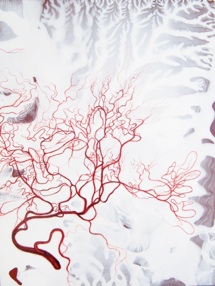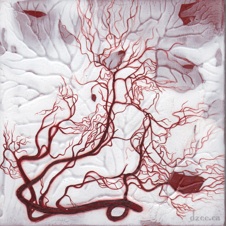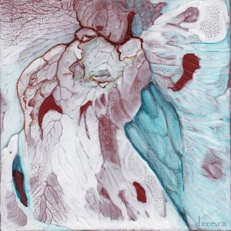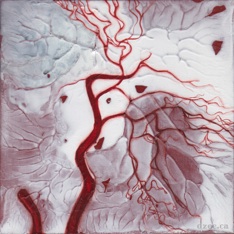operational closure of the nervous system


not a receiver of “information”
Aside from the question of what is “information” (Gregory Bateson said it is the “difference that makes a difference” leaving the valuation of “making a difference” obviously up to the observer who makes the claim” I want to make here, quite briefly, one of the main points of this whole unit.
Namely the nervous system is a structurally determined system and hence what happens to it is not determined by any “signal” from the “outside world”. There is simply nothing that passes from the outside to the inside; there are only various triggers that cause changes to the organism. That this happens in a way that is coherent with the circumstances is again the gift of our long evolution, living systems with us included have evolved a configuration of complex internal changes that appropriately conserve their connection to the medium.


the nervous system detects itself
What we see, what we sense in any manner, is our own internal configuration.
The nervous system is a detector of its own configurations. It “knows” or “senses” what is happening in its own internal dynamics and that is what enables the living system, ourselves included, to act as in a manner that connects it appropriately with its medium. We do not see the world, we sense ourselves; but the self we sense is richly composed in a manner that is intricately and beautifully connected to our highly complex circumstances.

Thus, the nervous system composes our experience: what we see as if “in front of us” is the result of our entire cognitive process as triggered by our circumstances. It is adequate for us to maintain connections with our complex physical, biological and social medium -- in all the dimensions and domains of our lives -- due to operational closure. (more on next page)
Once more: the nervous system is a closed network of relations, that takes on different forms according to various triggers, and then detects configurations in itself. That is what it does.

where in the brain?
Neurologists investigate various areas of the brain to determine what area participates in what functions. There are of course, as in any system, local densities of organization and structure. However, that does not mean that each piece is “just for” doing that thing.
The early determinations of what areas of the brain were responsible for which functions were largely based on pathologies. For example accidents or strokes that destroyed some part of the brain revealed a loss of some capacity or other, and this was consistently the case for particular areas of the brain, hence the “language center” and the “motor center”. Clearly that part of the brain was necessary for the particular function. Listen to the little story below for a refreshing perspective on this localization of function.


an analogy, from a presentation by Steven Rose
